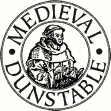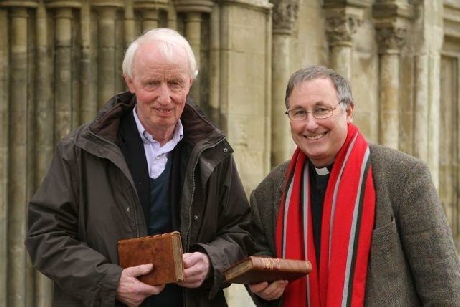
Medieval Dunstable© Webmaster Helen Mortimer Privacy Policy | Terms of Use



David Preest has translated from the Medieval Latin, the Dunstable Annals. Published by Boydell and Brewer they will be on sale at Priory House, Dunstable in 2014.
Charters
Author Hugh Garrod
In 1534 Henry VIII broke with the Pope in Rome and made himself Supreme Head of the church in his lands. The religious houses had traditionally paid 5% of their income to the pope and Henry now appropriated this money to himself. Later that year he decided to impose a further 10% tax on them and needed to know the income of each establishment.
‘Valor Ecclesiasticus’ means ‘ecclesiastical valuation’ and was a survey of all the religious houses in England and Wales. 553 establishments are listed.
In January 1535 the government initiated the Record Commission to conduct the survey. All clergymen, priests, abbots, priors, colleges, hospitals and other religious establishments had to give sworn testimony to their local commissioners concerning their income, spiritual and temporal. Each assessment was made by a triumvirate of Commissioners.
Spiritual income amounted to 25% of the whole and was made up of gifts, glebe money, tithes and leases on benefices. Other income was temporal. New clerical appointees also had to surrender their ‘first fruits’ to the crown.
Money spent on food for the poor was exempt but that spent on schools had to be included as’ a school is not necessary for children.’ The commissioners, untrained and unpaid, were mostly local gentry, mayors, magistrates and sheriffs.
The whole exercise was completed in six months and so was prone to errors. Money from the diocese was to be paid to the bishop by Christmas and the bishops had to pay the crown by Easter.
The total wealth, according to the Valor, was £ 136,361.12.8½d gross and £91,303.15.5¼d net. The amounts for Bedfordshire were £2596.1.4¾d gross and £2252.15.10d net.
Dunstable’s gross is £402.13.9½d and net £344.12.5½d.
The Valor gave the government, for the first time, a complete picture of the scale of wealth of the church as a whole and the religious houses in particular. Soon afterwards, Henry began to use this information to seize most of these riches for himself.
The suppression of houses worth less than £200 per year began a few months after the completion of Valor Ecclesiasticus. These included Bushmead and Markyate. This suppression prompted the larger houses to forgo repairs and improvements, as they thought the same might happen to them. There was also a tendency to lease manorial lands and their mills rather than work it themselves. There was also a drift from the arable use of land to pasture and meadow. Not only did this involve less work, it brought in more income.
No figures are given for Dunstable, but Cirencester Abbey had 1210 acres arable, 480 acres of pasture and 503 acres of meadow. At the Dissolution, Cirencester had 17 monks and 110 laymen. At this time, pensions were paid to Gervase Markham and eleven other canons.
English Monasteries on the Eve of Dissolution, Savine, Clarendon 1909, Oxford Studies in Local & Legal History, vol 1.

David Preest and Revd Stephen Williams
| Archaeology |
| Audio Guides |
| Education |
| Exhibitions |
| Events 2013 |
| Physic Garden |
| Priory History |
| Priory Churches / Lands |
| Town History |
| Virtual Tour |
| Website |
| Archaeology |
| Charters & Bylaws |
| Eleanor Cross |
| Famous People |
| The Fraternity |
| Friary |
| Guided Tours |
| History |
| Inns |
| Dunstable Treasures |
| Kingsbury |
| Middle Row |
| Royal Visits |
| Sheep & Wool Trade |
| The Town |
| Friary Archaeology |
| Bone Study |
| Friary |
| Annals Charters Valor Ecc |
| Archaeology |
| Churches and Lands |
| Guided Visits |
| Audio Guides |
| History |
| Monastic Life |
| Virtual Tour |
| The Augustinian Priory |
| The Canons Route |
| Bedfordshire |
| Buckingham |
| Derbyshire |
| Nothamptonshire |
| Hertfordshire |
| Leicestershire |
| Oxon |
| Priors |
| Annulment |
| History |
| Archives |
| Book Sales & Shop |
| Exhibitions |
| Guided Walks |
| Heritage Talks |
| Physic Gardens |
| Schools |
| Tourist Information Centre |
| Tea-room |
| Visits |
| Priory House Heritage Centre |
| Education |
| Knight |
| Search Results |